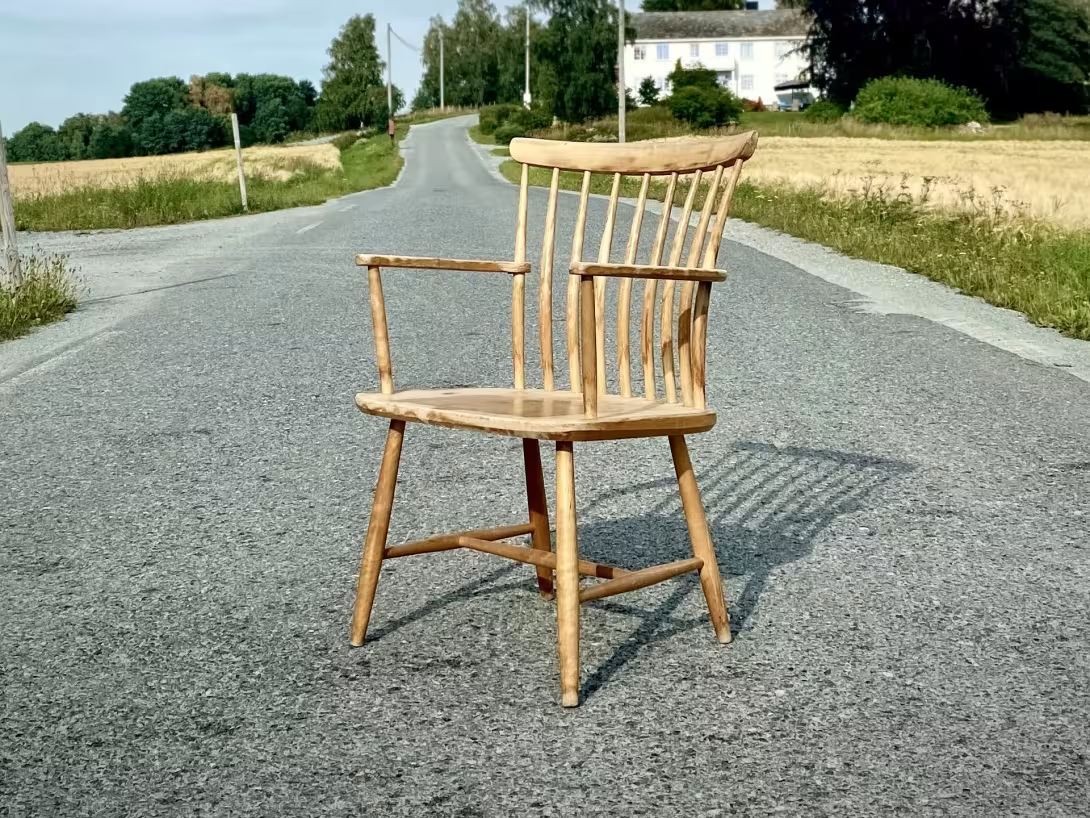The Swedes are great innovators and traditionalists. They successfully export a lot of their ideas to the rest of the world. Among others, they’ve given us Ingmar Bergman, Wille Sundquist, Abba, Volvo, Bluetooth and Spotify. And even dynamite! Oh, and they've designed the classic Coca-Cola bottle! How about that!
Therefore it’s no surprise that they also did some groundbreaking scientific research on chair design.
The Chair Doctor
The story starts with Bengt Akerblom (1901-1990), a Swedish doctor who became a pioneer in the field of electromyography. This is simply put a method of studying and evaluating the muscular strain induced by different body positions and movements. It is done by measuring the electrical nerve activity in skeletal muscles. Dr. Åkerblom had a special interest in sitting postures. Through his studies, he pretty much laid the foundation for the science of modern ergonomics. In 1949 he released his 187-page long thesis called “Standing and Sitting Posture with Special Reference to the Construction of Chairs.” It was also sold as a hardcover book.
Bengt Akerblom’s goal was to scientifically prove that a chair could be designed to minimize muscular strain and discomfort. In other words: to become the most comfortable chair possible. The main findings of the study were:
- The position and shape of the backrest, which is applied to the weakest part of the spine
- The importance of the height of the chair seat from the floor
- The slope (also called the tilt) of the seat
- The seat must allow for the sitter to move around and change between positions
He came to his conclusions through both lab experiments and observational studies of people using chairs in daily routines and work life. He found that chairs formed to mimic the human body usually gave no or too-little support to the lumbar spine. In other cases, the supporting area of the chair back was too high up. Åkerblom also proved that the seat would have to tilt the sitter backwards in order for the back rest to function properly. He also found that a chair seat that was too high above the floor would induce pressure on the underside of the sitter’s thighs. This would impair blood flow to the legs and result in fatigue and discomfort. Lastly, a pommel-less seat with only a shallow saddling to it would let the sitter easily shift position, which increases the sitter’s comfort over time.
In 1931, another Swede, Gunnar Eklöf from Stockholm, graduated as an interior architect. After working for a lamp factory and some furniture makers for a few years, he was offered a job as a furniture and interior designer at Karolinska University Hospital in 1936. This is where his life took a turn.
During his work at the hospital he developed an interest in ergonomics. Although I have not been able to find out how, he must have met Dr. Åkerblom during this time. Immediately after the war, Åkerblom was finishing his thesis at the Karolinska University Hospital and was probably keen to try out his theories in real life. However he was a scientist, not a chairmaker. One can only imagine it must have been love at first sight between Åkerblom and Eklöf.
And so Gunnar Eklöf designed a simple stick chair based on Åkerblom’s findings. As you can see from the protoype drawing below, all of the main principles have been incorporated: The low seat (15-3/4″ above the floor), the 6° seat slope and the star of the show – the bent back sticks providing lumbar support at 6-1/2″ above the seat. The seat is almost flat and has a very subtle saddling, allowing the sitter to easily shift her weight.
Bringing it to the Masses
Neither Åkerblom or Eklöf were chairmakers. They needed help to bring the chair into life and about 1950 they contacted the Nässjö Chair Factory to manufacture the conceptual chair. The Åkerblom Chair required exact engineering, including steam-bending. At this time, the Nässjö Chair Factory was already one of the largest chair factories in the Nordic countries. Nässjö had started producing stick chairs and rocking chairs in 1870, so by the time they were contacted by the two young designers, they already had 80 years of experience under their belt.
During the years 1949 to 1958, more than 120,000 Åkerblom Chairs were produced and sold. All were made from solid Swedish birch and had the same conceptual features. Gunnar Eklöf designed several variants of the chair, including side chairs, dining chairs and arm chairs. The most popular model was the “SZ03,” a light and elegant armless stick chair that had all of Åkerblom’s ergonomics baked into the design.
